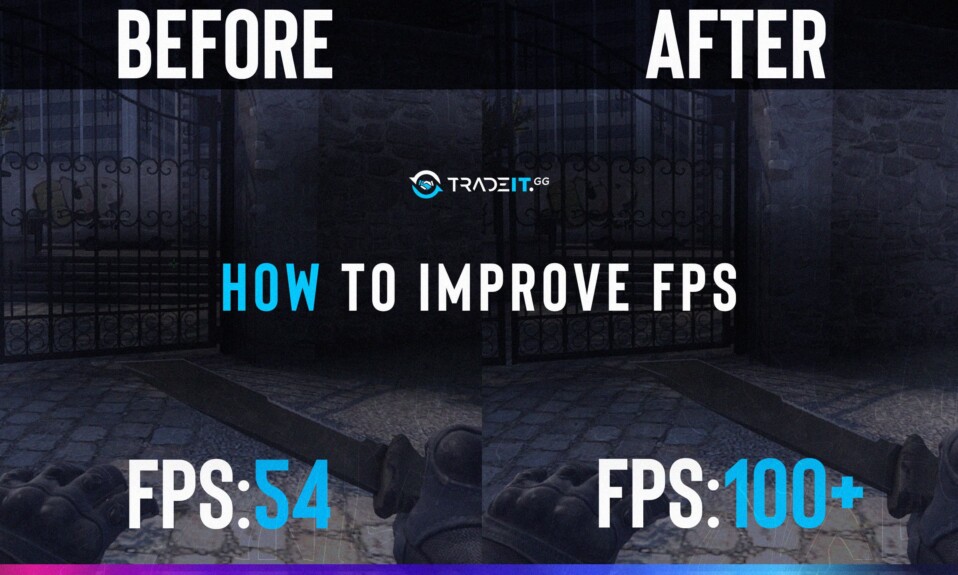Bodrum Escapes: Your Guide to Luxury and Leisure
Explore the best of Bodrum with exclusive insights and tips for an unforgettable experience.
High FPS Secrets for CS2: Game Smoothly or Get Left Behind!
Unlock the ultimate FPS secrets for CS2! Boost your gameplay, enhance your skills, and leave your rivals in the dust—dare to click!
Top 5 Settings to Optimize Your FPS in CS2
In CS2, achieving a high frames per second (FPS) is crucial for a smooth gameplay experience and competitive performance. To help you maximize your FPS, we’ve compiled the top 5 settings that can significantly enhance your gaming performance. First on the list is adjusting your resolution. Lowering your screen resolution can yield a considerable boost in FPS. Many players opt for a 16:9 aspect ratio at lower resolutions such as 1280x720 to find the best balance between clarity and performance.
Next, consider tweaking your video settings. Set your Texture Quality to medium or low, as higher settings can consume more VRAM, which can negatively impact FPS. Additionally, disable features like V-Sync and Anti-Aliasing, which can introduce lag and reduce your FPS further. Lastly, ensure that your rendering settings are optimized for performance rather than quality. By following these tips, you'll be well on your way to enjoying a smoother gaming experience in CS2.

Counter-Strike is a popular first-person shooter game that pits teams of terrorists against counter-terrorists in objective-based gameplay. The game has evolved through various iterations, each introducing new mechanics and maps. One of the exciting features that players can explore includes the sealed genesis terminal, which adds unique elements to the gaming experience.
Understanding the Importance of Refresh Rates and FPS in Competitive Gaming
In the world of competitive gaming, refresh rates and frames per second (FPS) are pivotal metrics that directly impact player performance. The refresh rate, measured in Hertz (Hz), indicates how many times your monitor refreshes the displayed image per second. For instance, a 60Hz monitor refreshes the screen 60 times a second, while a 144Hz monitor provides a smoother experience by refreshing 144 times. This higher refresh rate leads to reduced motion blur and improved responsiveness, giving players a crucial edge in fast-paced games where every millisecond counts.
Similarly, FPS is a measure of how many frames your graphics card can render each second. Higher FPS translates to smoother gameplay and greater visual clarity, enabling players to react swiftly to dynamic situations in games. For competitive gamers, achieving a consistent FPS, ideally matching or exceeding the monitor’s refresh rate, can greatly enhance gaming performance. In conjunction, both refresh rates and FPS not only enhance the visual experience but also contribute to better accuracy, aiming fluidity, and an overall competitive advantage.
How to Troubleshoot Low FPS in CS2: Common Issues and Solutions
If you're experiencing low FPS (frames per second) while playing CS2, it's essential to identify and address the common issues that could be impacting your gameplay. One of the first steps is to ensure that your computer meets the minimum system requirements for CS2. Check your GPU, CPU, and RAM specifications against the game's requirements. If your hardware is outdated, consider upgrading components or optimizing your system settings for better performance.
Another frequent cause of low FPS can be attributed to background applications consuming valuable resources. To mitigate this, you can open the Task Manager (Ctrl + Shift + Esc) and close any unnecessary programs that may be running. Additionally, adjusting the in-game graphics settings can significantly enhance your FPS. For instance, lowering settings like shadow quality, anti-aliasing, or texture detail can free up processing power. Remember to update your graphics drivers regularly for optimal performance.